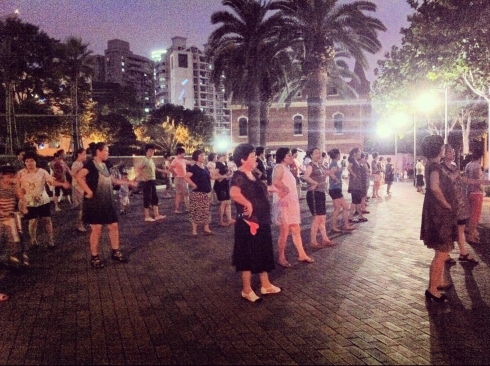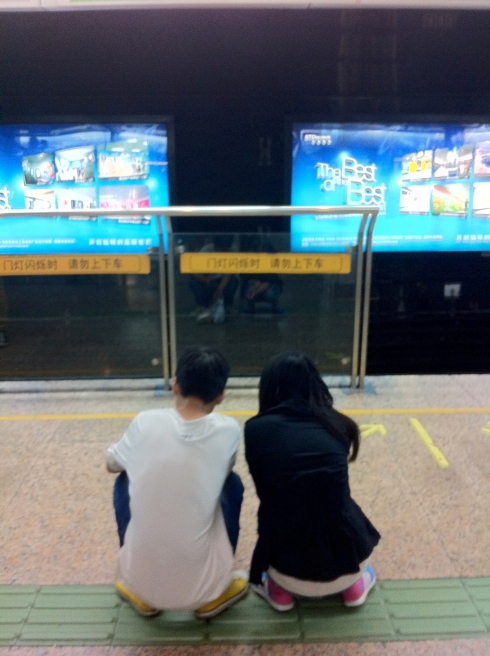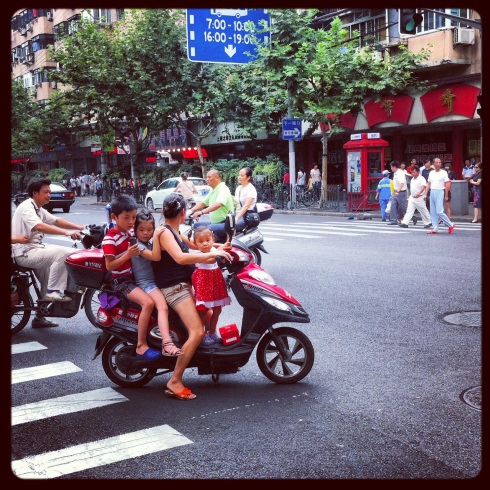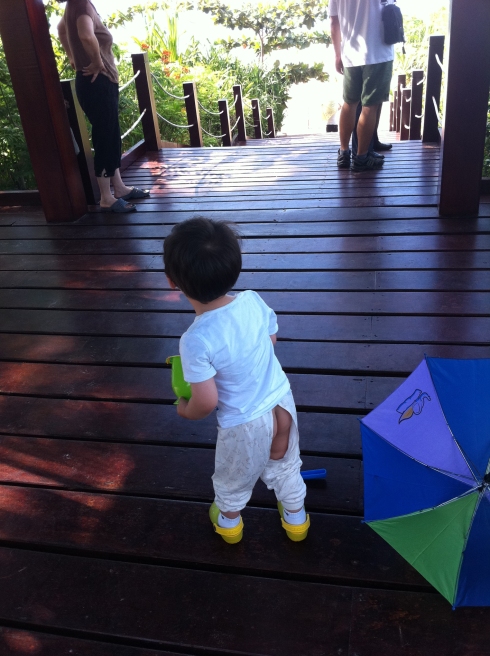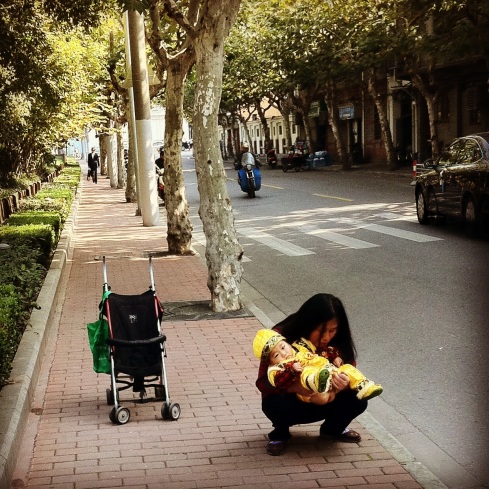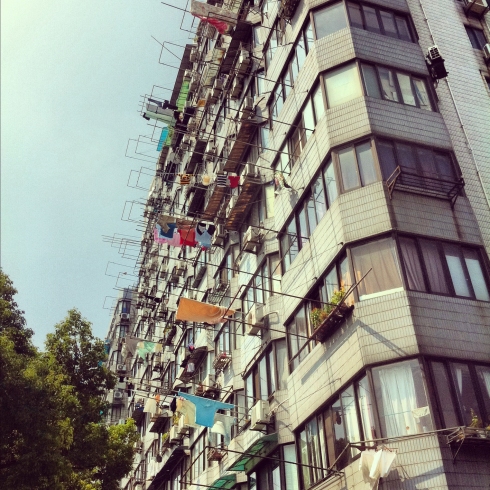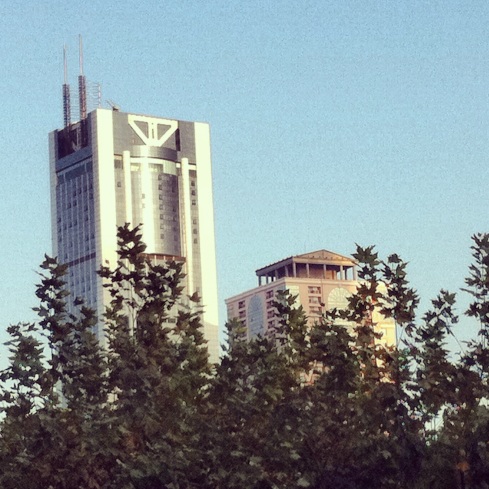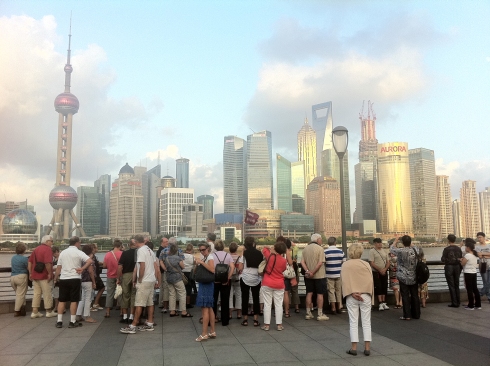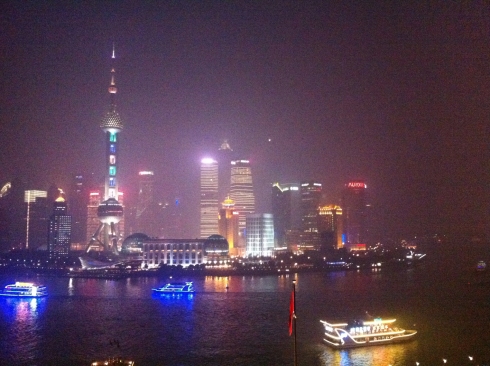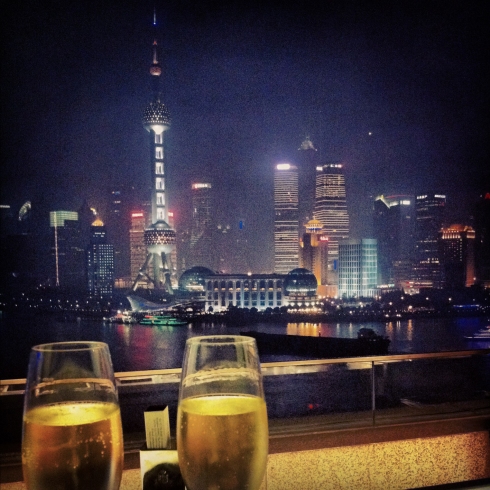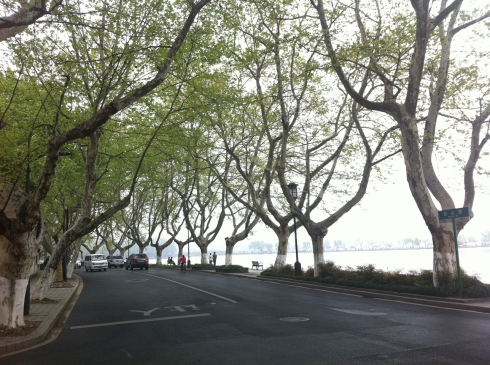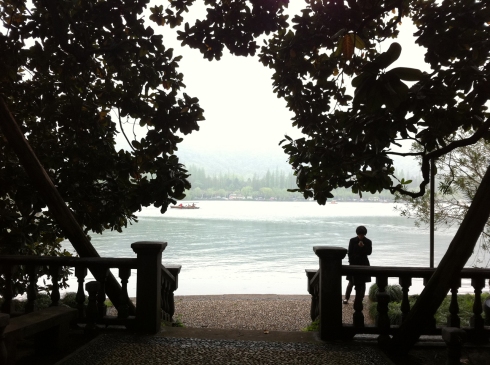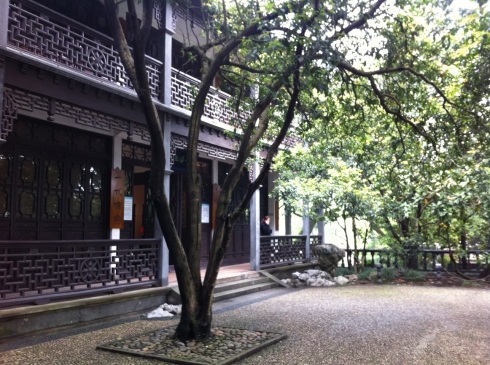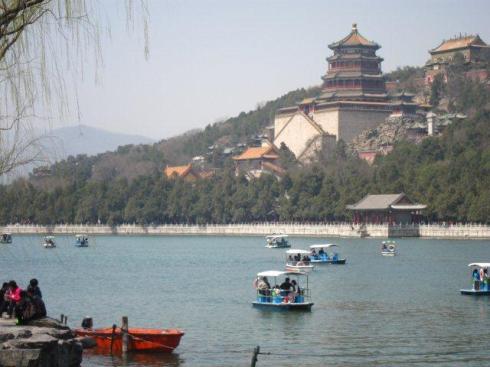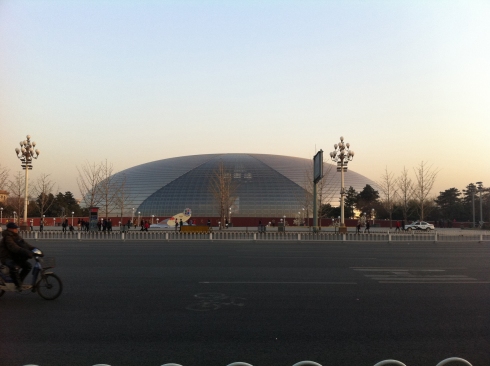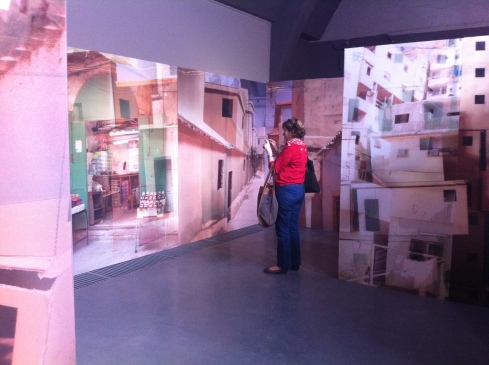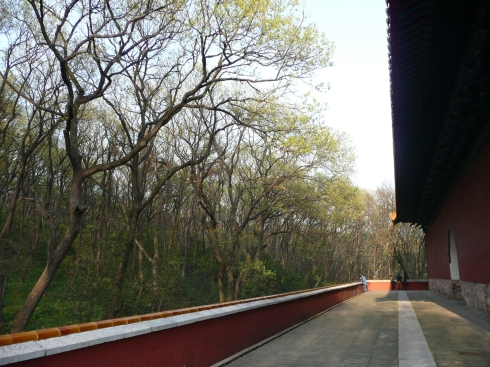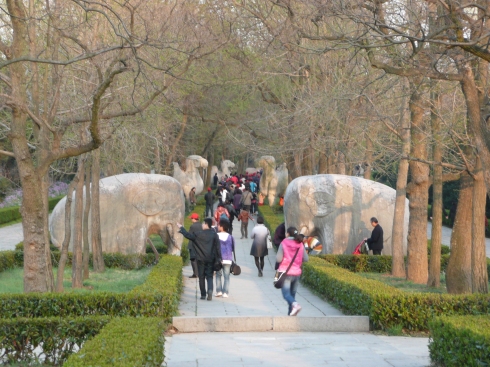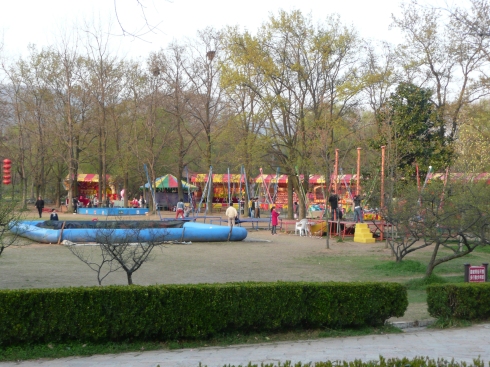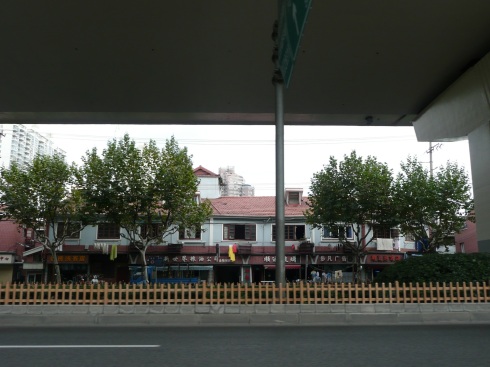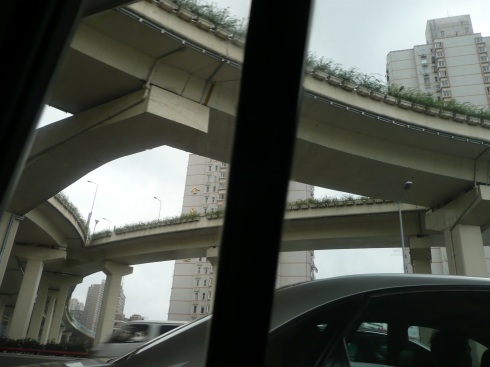Merry Christmas everyone, friends or random readers! Hope you’re all having a fabulous time off. I’m too busy spending quality time with family and friends to write anything lengthy but here are a few totally random pictures of Shanghai mostly, which I’ve been collecting for a while. Hope you’ll enjoy them and happy new year to all!
Visits: Hángzhōu
22 MayWhilst Shanghai itself is not that old, it is surrounded by lots of “smaller” towns with a long history. The most famous ones are Sūzhōu and Hángzhōu (pronounced su-joe and hang-joe), which are respectively 30 minutes and an hour’s fast train ride from Shanghai.
When my parents were here, a while ago now (I have been a bit lazy), they felt like escaping from the city environment for something quieter and relaxing. So we headed to Hangzhou, which I was told is very pretty, prettier than Suzhou despite its UNESCO Wold Heritage status.
We thought we’d hire an English speaking guide at the train station to show us around and explain us a thing or two. As soon as we left the platform, we were greeted by lots of people selling their touring services. My speaking and negotiating skills were put to the test. I did well but it still took 35 minutes to get a guide (non-English speaking) and a car just for ourselves. English speakers are difficult to find at the station (I think you’ll have to hire one from a travel agency in Shanghai); also it wasn’t clear that we didn’t want to share a car and finally of course, there was no way we were going to pay 1,000 RMB (80 euros, 100 pounds) per person. So I got it down to 400 RMB for the three of us :D
As for the other posts on my recent visits, here’s my practical piece of advice. Although it can be pricy, I’d advise anyone with limited time in Hangzhou to hire a guide if you don’t want to walk a lot. Once you’re around the historic places, it will be very difficult for you to find a cab to get back to the station or anywhere else in town.
In Hangzhou, most places to see are around the large lake, which is located to the west of town. As everywhere in eastern China, you have to expect company anywhere you are, even if you think it’s a cunning plan to visit Hangzhou on a Friday. For a long time, it was difficult for Chinese people to move inside their own country, because infrastructure were not as developed, people couldn’t afford it but also because it was forbidden or highly regulated. In fact, you still need to give your passport number to be able to buy a train ticket to go anywhere. So they’re now making the best of it and are therefore the first tourists in their country.
Anyhow, despite the crowds, traffic around the lake and the mist, Hangzhou was beautiful and very relaxing. It’s very green and there are some mountains in the horizon which remind you that nature survives outside Shanghai. Around the lake are pagodas and houses of historic and learned figures. I’m sadly unable to give much details. I just know that Hangzhou was the capital of the Wuyue Kingdom during the 10th century. During this short time, the arts flourished and so did Buddhism, leaving us with the pagodas. Hangzhou is also known for having an Arab community, which settled in the 12th and 13th centuries when the city was an important sea trading post. Ibn Battuta visited the city in 1345 and praised its beautiful lake.
A lot of more private resorts, like the one at Mogan Shan, developed lately, catering for really quiet and relaxing weekends away from the crowds. So there’s definitely a lot more to do in Hangzhou, you just have to dedicate more than one afternoon. More on that next time hopefully…
Visits: Běijīng
6 MayWhen my parents confirmed they were coming to visit, I immediately asked them whether they would like to go to Beijing. I probably have some affection for the Chinese capital because it’s the first (and only) place I went to when I visited China for the first time. I was so excited to be there and have such good memories of it that I sort of kept the enthusiasm for it. Also, to be fair, it would be a pity for anyone to come to China on holiday and not visit Beijing. It’s filled with absolutely grandiose historic places, the sort you will only find in a few places on earth like the Pyramids or Luxor in Egypt or Versailles in France.
I won’t go over every single visit we did, because I can’t describe them and you’ll need to go and see it for yourself one day. I’ll just say it’s impressive and fascinating even though the pictures below probably don’t do these places justice.
Apart from the abundance and monumentality of historic places, the trip was interesting because it made me realise how different Beijing and Shanghai are. Some differences couldn’t be more obvious but there’s more than meets the eye. As a city, Beijing is monumental in every single way. Not just because of its historic monuments, but the scale of everything is just not human and reminds you of the power game that’s always existed between China and other countries. China’s got land, people and can mobilise both, don’t you ever forget it. Beijing is there to remind you of that. Tiananmen Square is massive, the roads are gigantic and difficult to cross and the basic unit of distance is certainly not the meter but the kilometre. My father chose a hotel which was central and therefore close to the Forbidden City, Tiananmen Square and the lakes Houhai and Beihai. We thought we’d go for a quick afternoon walk on the day we arrived. We walked for about an hour and even I got fed up and decided we’d take a cab to get to Lake Houhai. It makes Shanghai, which is a bigger city (23 million vs. 16 for Beijing) feel very human. In spite of its flaws, it certainly is more pedestrian-friendly. Here are two pictures but again, it’s really difficult to give a sense of scale of Beijing within a frame.
Culturally, oddly enough Beijing is definitely more happening than Shanghai. You would’ve thought that being the seat of power of a controlling regime, artists would go elsewhere. But no, the cultural scene is located here. When I visited in 2004, the 798 Art District was still an underground place, now it’s become a bit too commercialised for my taste, but still has a few good things to see. I’ve read somewhere that there is a sort of ambivalence of the government towards artists. The fact that some Chinese artists are doing so well abroad is a source of marketing (and income) for the country, but at the same time the government doesn’t want it to get out of hand. So there’s both encouragement and restraint.
From an expat’s perspective, I have often found that foreigners who have lived in both cities tend to prefer either Beijing or Shanghai, but rarely like both. Shanghai is definitely a yuppie kind of place, very entrepreneurial, very wealthy, sophisticated and show-off. Beijing, despite its aggressive urban environment and climate (very very dry and very very very polluted), I am told, is a calmer, more settled place. People are warmer and it appears that there is a better integration between Chinese people and foreigners. And those who have lived in Beijing speak about it with a lot of fondness.
On the way to the airport to fly back to Shanghai, I have to admit that I felt really grateful to have ended up in Shanghai rather than Beijing. The pollution and traffic really got to me after four days only. I am nonetheless very curious. Next time I visit Beijing, it’ll be to get a resident’s perspective and understand what it is that makes this city so endearing.
Visits: Nánjīng
17 AprUntil early April, the only places I had been to in China were Beijing (and surrounding tourist sites: the Great Wall and the Ming Tombs) and Shanghai. It looks like spring is the season of bank holidays in China too, gracing those who work with long weekends and making my weekdays a bit less lonesome.
With some friends, we decided to go explore Nanjing which is about an hour and a half to the northeast of Shanghai. We woke up early and headed there with the fast train that goes all the way to Beijing. According to our research and guides, there are few things to see in Nanjing. After all, it was the southern capital* for a few centuries and dynasties. The trip was all in all very interesting but unfortunately not for the reasons we had anticipated.
Various sources will point you to a few places. Although we haven’t visited all of them, if you should go to one, it is the Ming Tombs. Yes as in Beijing, Nanjing’s got its own version of it. In many ways, they are similar to those outside Beijing, only perhaps smaller. But the site is beautiful, especially with all the plum trees in full bloom (which entitled us to a discount on entry tickets – plum tree festival or something), the buildings are impressive and the promenade from one tomb to the other very pleasant. Like for many historic sites in China, there is no available explanation on the site and you have to put up with aberrant things like a kids’ entertainment park within the premises of a UNESCO World Heritage Site. But hey, it’s China and compared to what we saw before, it isn’t such an eyesore.
That’s for the must. What you should by all means avoid is the Purple Mountain. It may have been an important site at some point, but now it’s just an attraction park for Nanjing’s inhabitants to escape the city and picnic or play cards. Thankfully, we took the cable car all the way to the top and back down (our initial plan was to walk) and then strolled from absurdity to absurdity, i.e. bad modern structures and sculptures supposedly spiritual or reminiscent of important people. The only thing we got out of it was probably some fresh air for our soiled Shanghai dwellers’ lungs.
Back in town, the Linggu Temple is not really worth your while. It now feels more like a roundabout than a Buddhist Temple set in a park. Clearly we didn’t have the time to see everything, there are a few museums and other spots to check out.
That’s for the bad stuff. I’m not trying to undermine Nanjing or its heritage, but I can’t help complain about creating fake heritage sites and not emphasising properly (through information or design) those sites that are of true importance.
Now what I found of real interest is that Nanjing is actually a lively and pleasant city. At the moment, it has “only” 8 million inhabitants but clearly the authorities are foreseeing massive expansion of urban areas. We arrived at the southern train station which is in the middle of nowhere. However, it is surrounded by construction sites and I’m sure in a couple of years or so a whole neighbourhood will have emerged out of the ground. Another thing about the station, it is ABSOLUTELY MASSIVE. It must be the size of two football pitches. You could organise the Athletics Championship in that station.
Also the fast train’s tracks to Nanjing are elevated along the whole journey. It makes you realise that the level of investment in infrastructure from the government is phenomenal. I guess that’s where most of the money is going, along with defence, given that taxpayers pay high taxes but don’t really benefit from any social or economic security.
* nán = south, jīng= capital; běi = north … Běijīng = northern capital
Characterising Shanghai
14 DecAs a seven-week old resident of Shanghai, I have to say that I find the city very different from the way it is portrayed in Europe. There, Shanghai equals Pudong, which is the newly developed area on the eastern bank of the River Huangpu. It’s about 10 to 15 years old. The Chinese are mainly to blame. Pudong was (and still is I suppose) their way of saying this is what China is now; modern, economically vibrant and competing with the rest of the developed world.
I was pleasantly surprised to see that the city is in fact much more diverse and complex that this simplistic message, especially in terms of its skyline and history. Granted there are plenty of tall buildings and their number keeps increasing, but there also are lots of low rises, mostly in the French Concession but elsewhere too. Likewise, Pudong, impressive though it is from the Bund, feels like a big international showcase. There’s a mega-giant mall, an aquarium, iconic architecture and many offices separated by giant avenues, but the core of the activities and what makes Shanghai one of the most exciting cities to live in or to visit still happens in Puxi (the western side of the Huangpu). This is where historic Shanghai developed and, again, as the Chinese do, we have to recognise that this history does not date back very far. Compared to Beijing, which is millennia old, Shanghai really started developing 150 to 200 years back, but it constitutes one of the key places where the history of 20th century China was shaped. The main protagonists, Mao notwithstanding (I visited his house two weeks ago), all lived in Shanghai at one point and many crucial decisions were made here. Similarly, the power struggle with Europeans also started here and then spread elsewhere.
So there you go, it’s full of paradoxes but it’s fascinating. The extremes constantly juxtapose one another and in a way are quite aggressive, to the eye and to the people. Tall buildings are adjacent to low rises; gated compounds sit next to popular neighbourhoods; historic buildings and residential areas face the internal ring roads; if you like walking as much as I do or just have no other choice, you are bound to cross those same ring roads very often; and with all the money spent on Pudong and other iconic landmarks, some people still can’t afford a bicycle and have to use their own body power to drag their overloaded karts. Yet I am surprised that the city is so safe; that street life, domestic and modest, has not been dampened by the brutalising development process and that Shanghainese, except for the impatient behaviour typical to all big city dwellers, are so stoical and rather friendly when spoken to. In other places, they would just be annoyed if not aggressive towards high-income earners and foreigners.
